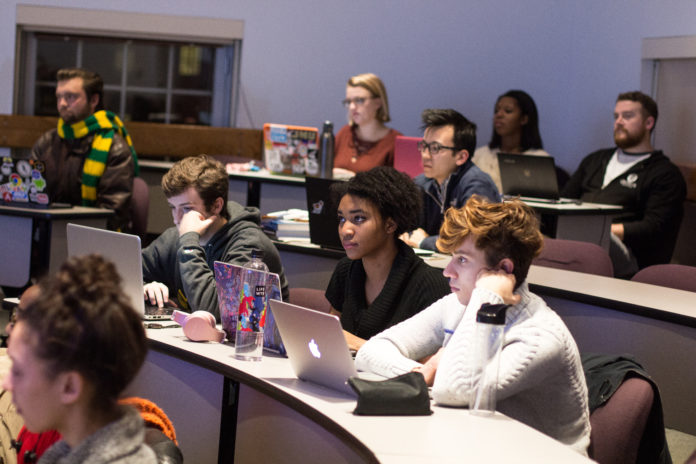In my nearly four years at the College of William and Mary, I have been asked many times: What is Student Assembly? Most of those asking have offered their own presuppositions in response – perhaps it’s just a group of megalomaniacal students who believe they’re “all that,” or maybe it’s a powerless group, ultimately working at the behest of the “administration.” Cynicism aside, I will set out to answer the question as best I can, gleaning from my experience serving as a Senator for three years and now nearing the end of my term as President. A more precise question will shed greater light: who is the Student Assembly?
For starters, we are a government comprised of three branches. As president, I head the Executive branch, along with Vice President Samir Tawalare and Chief of Staff Rachel Becker. I act as the bridge between the administration and the student body. The president appoints a cabinet of nine secretaries covering a range of student needs, from the Department of Finance to the Department of Health and Safety. Serving in each of these departments are our undersecretaries, totaling nearly sixty students. Whether it’s the undersecretary of Multicultural Affairs or the undersecretary of Energy and Research, our executive branch is filled with folks who effectively perform the work of their given focus. More than anything, they care deeply about using their skills to serve the student body.
The Senate, our legislative branch, has 26 members representing each undergraduate social class as well as our graduate school programs. This branch is responsible for writing legislation, which span from bills funding speaker events to a resolution proclaiming a commitment to fighting sexual assault and harassment. Senators focus on projects in particular interest areas and collaborate with Cabinet members who share those interests.
Our judicial branch, the Review Board, functions as a deliberative body concerning matters dealing with the Code, the Constitution, and suits brought against SA. They also issue advisory opinions at the request of the president or chair of the Senate. The Review Board is a work in progress, and this is the first year in my time at the College that we’ve had a full Board of seven members, currently under the leadership of Chair Henry Blackburn ‘20. Overall, SA exists to distribute a budget of approximately $750,000 across dozens of recognized student organizations.
Additionally, our reserve fund is used to appropriate funding for bills and other services such as subsidized STI testing or wages for Steer Clear. It also exists to advocate on behalf of students, representing the concerns of our constituents to the administration and president, the Board of Visitors, and the state. SA must serve the student body through fiscal responsibility and direct engagement. We have worked earnestly over the last few years to build up our institutions, increasing responsivity, notifying organizations about our financial services and amplifying the voice of the students. We still have a long way to go, and the work continues.
But for now, the answer is that SA is you, me and our fellow students. SA is what we make of it, and it will take all of us to participate, listen and learn. We must also responsibly and intentionally bring in members that look like our community to guarantee each student is heard. SA has made strong stances in causes of social justice, such as condemning Pi Kappa Alpha social fraternity for their despicable display of racism at an annual party or standing in solidarity with undocumented students. And during my time in SA, strong individuals, women in particular, pierced the white, male-dominated “Old Boys Club” mentality that I witnessed freshman year. SA ought to be an institution that strives for justice and equity, that literally puts our money where our mouth is in order to give a platform to students who don’t always get a voice. In short, SA becomes what we decide to bring to the table, and when we ensure that SA members share our values and strive to make a difference, we can make this place a little bit better. That will take all of us to work together and reflect on our responsibility to one another and to this campus.
Email Brendan Boylan at bjboylan@wm.edu.

